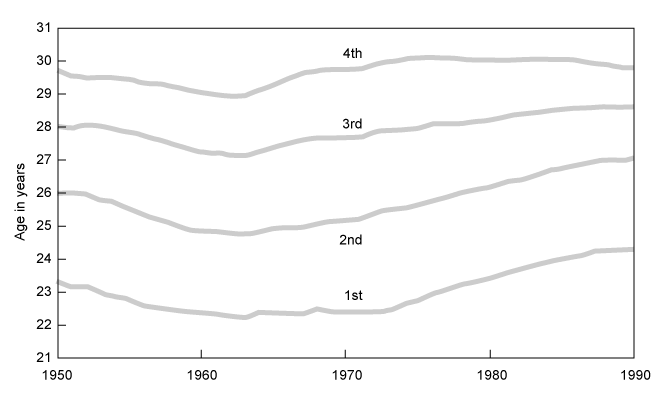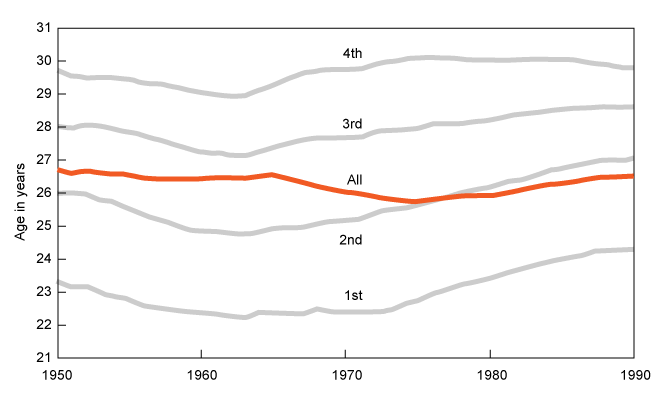The Bongaarts-Feeney tempo-adjusted TFR (TFR*)
Bongaarts and Feeney’s TFR* (1998) is very similar to Ryder’s translation formula, with two important exceptions. First, they use a period measure of the rate of change in the MAC, which has the desirable property that it can be computed for the year just passed. Second, the Bongaarts-Feeney adjustment is done by birth order because the period MAC is also sensitive to quantum changes in fertility. The latter is illustrated in Figure 2. Starting in the 1970s, the MAC for birth orders 1 to 4 increases (which, incidentally, is evidence of tempo changes in childbearing), but what do you think is the trend in the MAC for all birth orders combined?
 Click here to reveal the MAC for all birth orders combined in Figure 2.
Click here to reveal the MAC for all birth orders combined in Figure 2.


Figure 1: Mean ages of women at birth by birth order, United States, 1950-90
Based on Bongaarts and Feeney (1998)
In the period that the MAC for birth orders 1 to 4 increases, the MAC for all birth orders combined thus decreases. This counter intuitive finding is related to the fertility decline that occurred in the same period. That decline was brought about by a larger reduction in higher compared to lower order births (i.e., shrinkage in family sizes). Because higher order births tend happen at older ages, the overall MAC declines.
The relationship between the overall MAC and the birth order-specific mean age at childbearing (MACi) can be expressed as the birth order specific MACi weighed by the fraction of births at each parity: